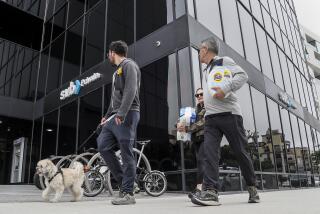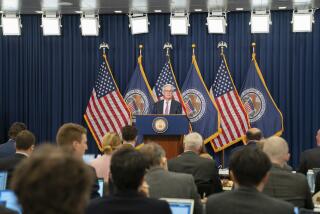Gonzalez Asks Fed About Lincoln Loans : Thrifts: The House Banking Committee chairman wants to know what happened to $98 million the agency lent the S&L; after it was seized.
The chairman of the House Banking Committee wants to know what happened to $98 million that the Federal Reserve Board lent to Lincoln Savings & Loan during the first four months after regulators took control of the Irvine thrift in 1989.
In a letter to the Fed that he released Monday, Rep. Henry B. Gonzalez (D-Tex.) said he was concerned that the money might have been used to pay off uninsured Lincoln depositors and creditors and “even more concerned” that some of it paid off any accounts of Lincoln owner Charles H. Keating Jr. or his family.
Gonzalez is seeking the information on Lincoln as part of a full report he wants on all 1989 loans that the Fed made to financial institutions through its discount window, which is where banks themselves go to borrow.
He asked two banking and thrift agencies--the Resolution Trust Corp. and the Federal Deposit Insurance Corp.--to cooperate with the Federal Reserve in providing Congress with information on discount window activities.
Gonzalez said in the letter that he has long had problems getting the Fed to respond to such questions.
“When the Federal Reserve opened the discount window to Lincoln in 1989, the smell of fraud hung over the institution,” he said in his letter. “It would not have taken great detective work for the Federal Reserve to raise questions about additional government funds being placed in the institution, which clearly was not viable and had no prospect of revival.”
Officials at the Fed could not be reached for comment.
After Lincoln was seized in April, 1989, depositors pulled millions of dollars out of the institution, threatening the S&L;’s liquidity. Liquidity is the ability to convert assets to cash quickly to pay off debts and other obligations. As the run on deposits grew, regulators operating Lincoln at the time rushed to the Fed to take out loans through the discount window.
More to Read
Inside the business of entertainment
The Wide Shot brings you news, analysis and insights on everything from streaming wars to production — and what it all means for the future.
You may occasionally receive promotional content from the Los Angeles Times.










